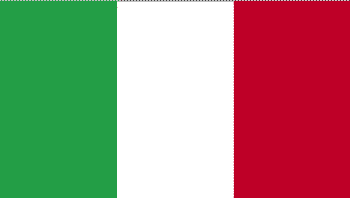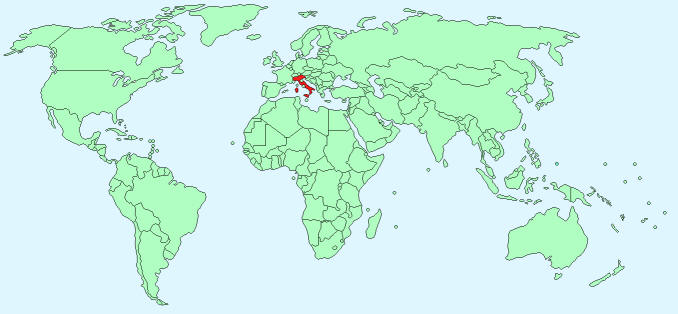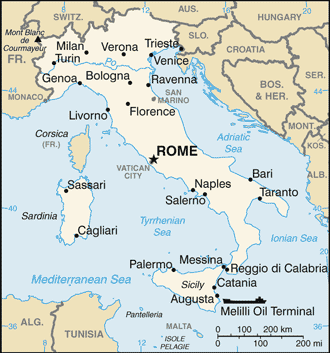Italy


Continent – Europe
Region – Western Europe
Size – 301,340km²
Geography – mostly rugged, mountainous, coastal plains
Language – Italian, some German and French
Religion – Roman Catholic 90%, other 10%
Monetary Unit – Euro
Natural Resources – coal, mercury, zinc, potash, marble, barite, asbestos, pumice, fluorspar, feldspar, pyrite
Agriculture – fruits, vegetables, grapes, potatoes, sugar beets, soybeans, grain, olives; beef, dairy products; fish
Industry – tourism, machinery, iron and steel, chemicals, food processing, textiles, motor vehicles, clothing, footwear, ceramics

Neighbouring Countries – France, Switzerland, Austria, Slovenia, Vatican City, San Marino
Population – 61,680,122 (2014 estimate)
Population Growth Rate – 0.3%
Average Life Expectancy – 82.03
Capital City – Rome (3,357,000)
Highest Mountain – Mont Blanc de Courmayeur (4,478m)
Longest River – Po (652 km)
Climate – Mediterranean cool winters 3°C to 14°C, warm summers 15°C to 29°C, winters and summers are cooler in mountain regions
Yearly Rainfall – 76 cm (approx)
Plant Life – conifers, beech, oak, chestnut, poplar, willow, cork, juniper, bramble, laurel, myrtle, alpines
Animal Life – chamois, ibex, roe deer, marmot
Bird Life – ravens, swallows, woodpecker, wood pigeon
Harvard Reference for this page:
Heather Y Wheeler. (2015). Italy. Available: https://www.naturalhistoryonthenet.com/Facts_Figures/Country_Facts/italy.htm. Last accessed Monday, July 18, 2016
Facts and Figures Pages
